Arequipa
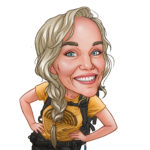
By Jaimy de Vries
In an isolated valley in Southern Peru, nestled between towering volcanoes and high desert, bisected by the Río Chili, sits Peru’s second-largest city. We stayed here for 6 days. The first thing you’ll notice when walking around is Arequipa’s volcano, El Misti, visible from everywhere in the city. We had an amazing time up here.
First things first: food!
After long drive of 12 hours from Huacachina, we arrived in Arequipa at in the morning. We contacted our hostel beforehand if we could check-in early and this was possible. We were very happy with that, because we had our luggage and we wanted to fresh up a little before we went to the city.
At 8 in the morning we walked to the San Camilo Mercado to get a nice fresh breakfast. San Camilo is a big food market where they sell lots of fruit, meat, beans and meals. You can also find some stands that sells souvenirs, hats and clothing. The market was really colorful with al the different types of fruit. We bought some fresh fruit and croissants and eat in front of a beautiful colonial building and we watched people crossing by and the traffic.
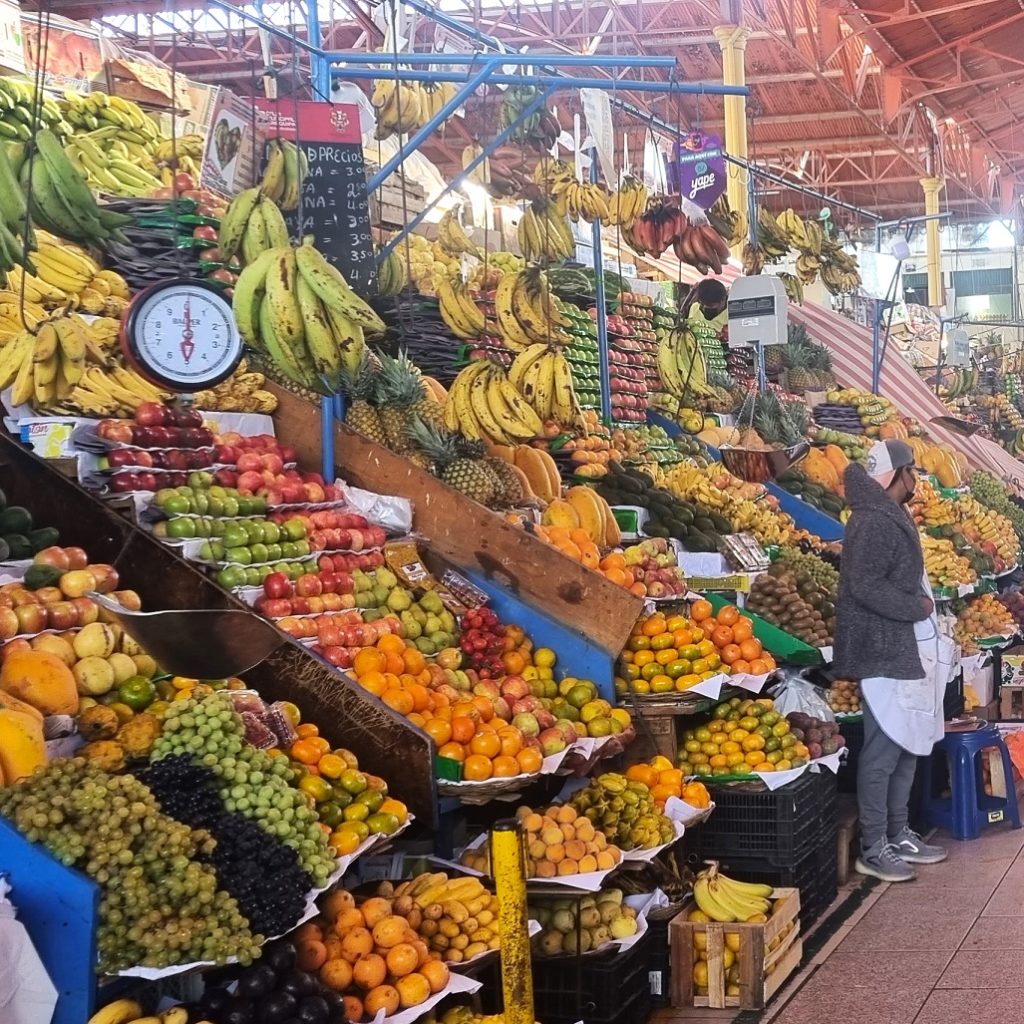
Love the colors of food markets!
Hello white city!
After that our battery was loaded to go for some city seeing. We walked towards the main square: Plaza de Armas. We saw some colorful buildings, but they were mainly white stoned. Arequipa is known as the “White City” (or “la ciudad blanca”, as locals use to call it). There are two theories as to why this is, one is that the name comes from the fact that a great number of its buildings were built using a white volcanic rock called “sillar” and the other is that the name “White City” is due to the fact that, in colonial times, more than 70% of the population was white.
Arequipa is a beautiful city, not only because of the nice architecture, but also due to its location. Arequipa lays in an isolated valley in Southern Peru, nestled between towering volcanoes and high desert, bisected by the Río Chili. The other thing we noticed while walking through the city is Arequipa’s volcano, El Misti, visible from everywhere in the city. The city is quite green too, you see lots of palm trees and colorful flowers everywhere in the city.

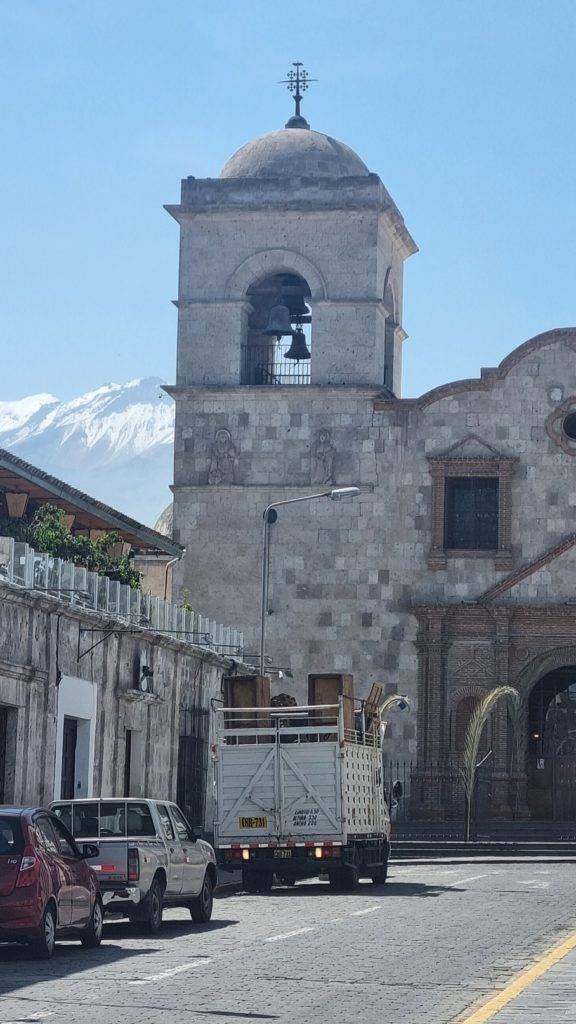
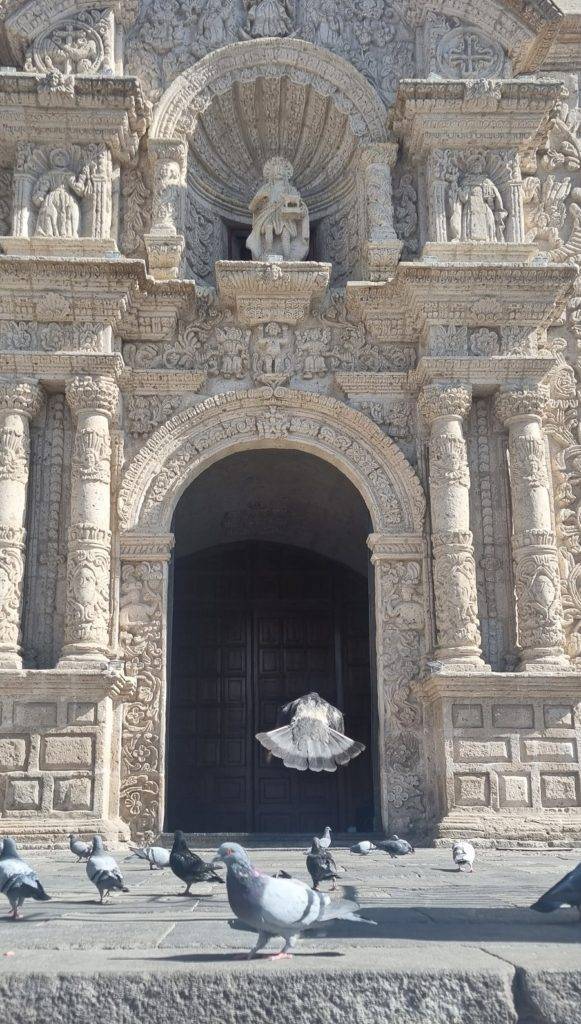
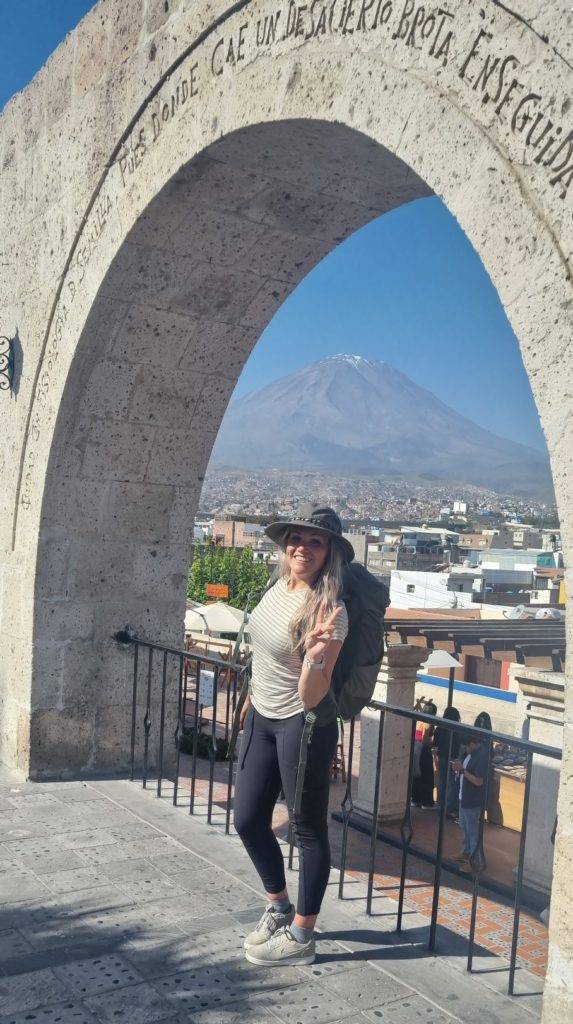
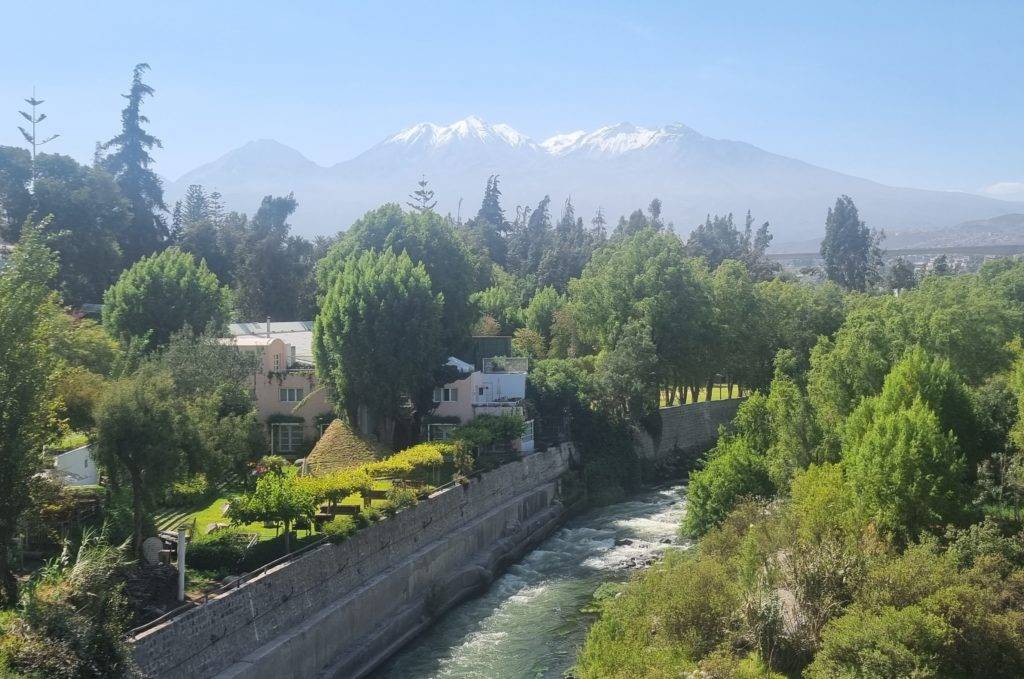
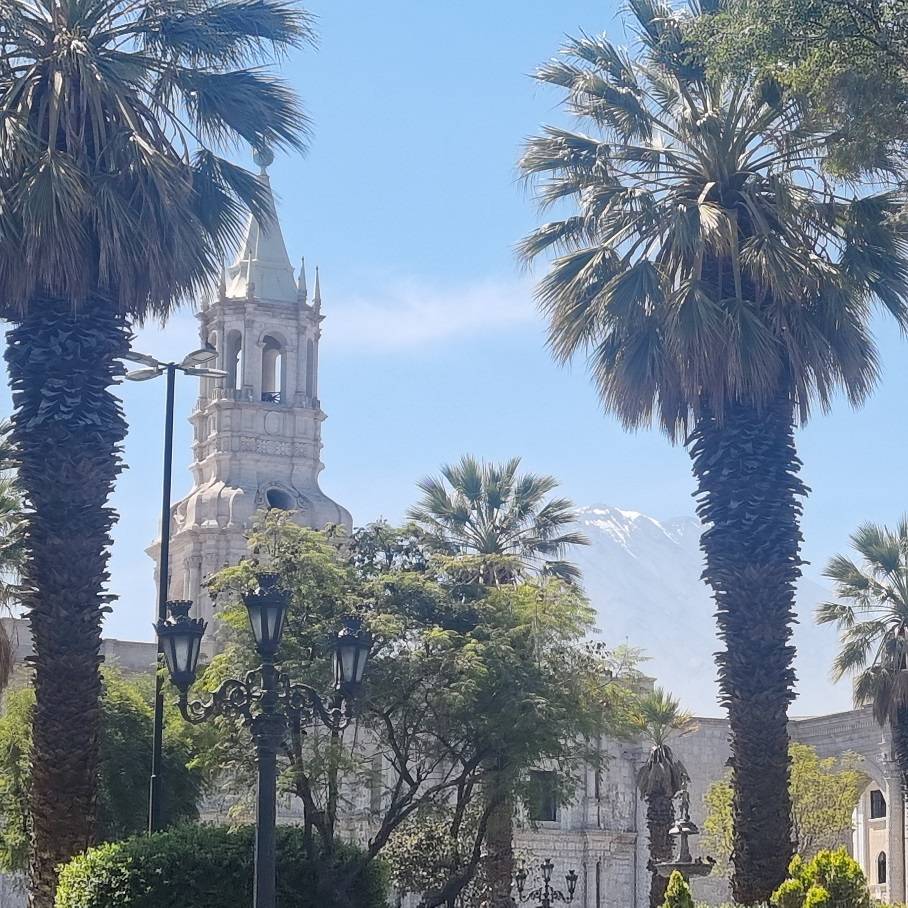
And hello colors!
But the city is more than white, it’s actually really colorful to. Colorful in the traditional clothing Peruvians wear, colorful in the sense that the people are really nice & happy and colorful with the colored buildings, cars and flower.
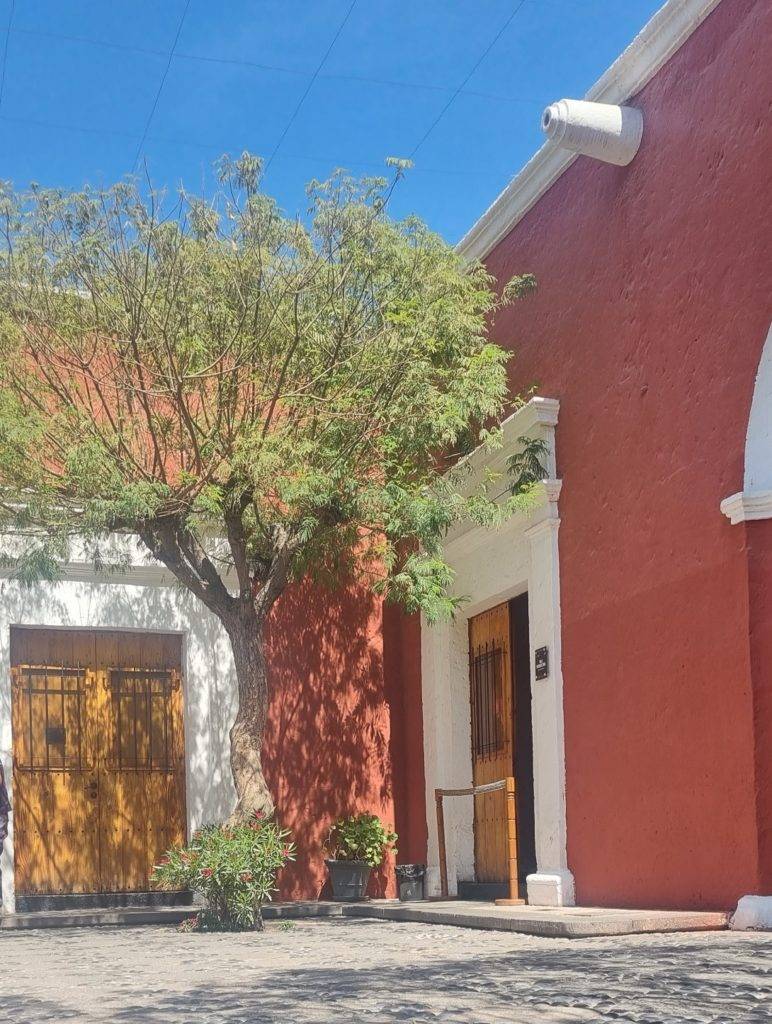
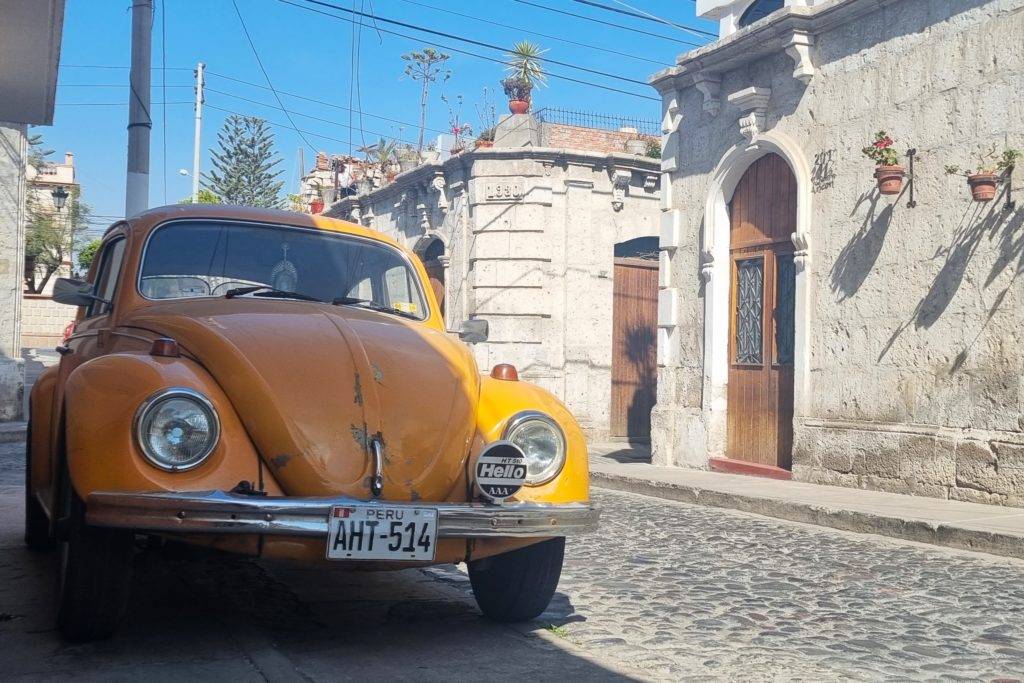
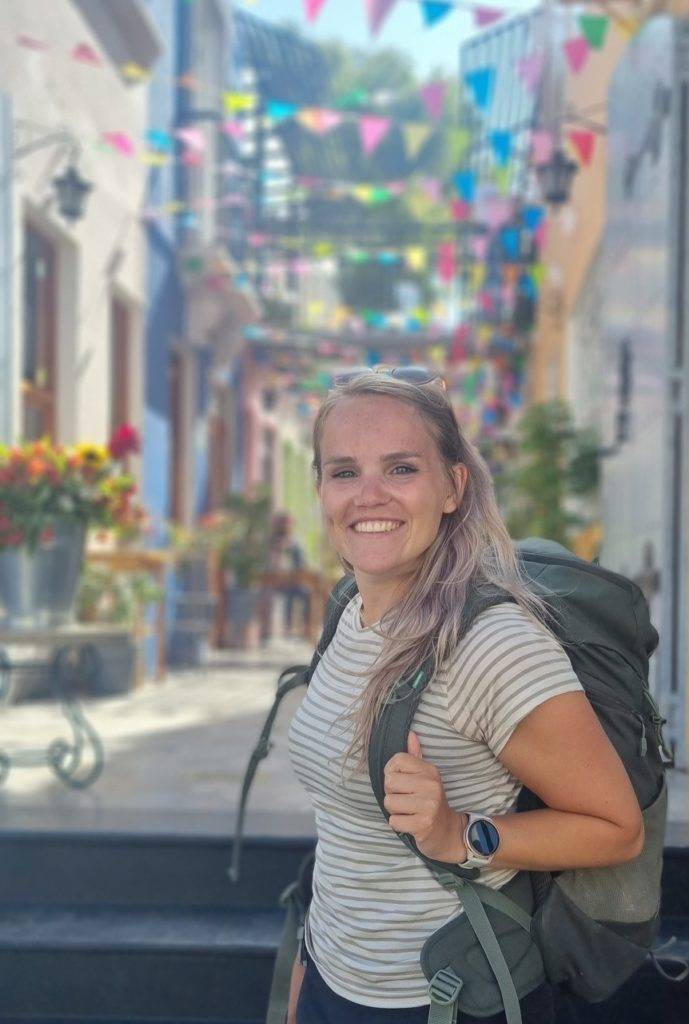
Museo Santuarios Andinos
We went to the museum Santuarios Andinos. This museum is about a girl called Juanita that sacrificed her life as an offering for the gods in the context of the Inca Capacocha ceremony. Her body and artifacts where discovered in 1995 at the Ampato volcano. The tour started with a 20 minute video about the finding and the Capacocha ceremony. They hold the Capacocha ceremony if a volcano erupted, they believed if that happend the gods must be angry. The most beautiful children were chosen for this ritual and Juanita was an outstanding girl.
I went to a similar museum in Salta (Argentina) where they found three mummy’s at Lluillullaco volcano. They told me that the sacrifice was peacefully because of the effect of the Chica drink that made them fell into a deep sleep. While at this museum they explain it was a cruel death. That’s because after Juanita drank Chica and fell asleep, she got smashed on her head and she died of internal bleeding. After the 20 minute movie we saw lots of artifacts and at the end we saw Juanita. Impressive to see her from up close. We paid 25 soles to enter the museum, the guided tour was free but they expect you to give a tip. Comparing it to Salta it was quite expensive.
Mwuah
We walked to the Monasterio de Santa Catalina, famous for its beautiful small streets and perfect to make some nice pictures. But we found out that we needed to pay 40 soles to enter, that was too expensive – especially for Peru. We were disappointed and decided not to go inside.
Then we headed to the Mundo Lama that you can enter for free. Normally there would have been a free tour you can join, but with us that was not the case. So we walked around, saw a couple of llama’s and we got to read something about how they process and make products out of llama wool. It was interesting, but there was not much to see. Maybe because we didn’t had a tour?
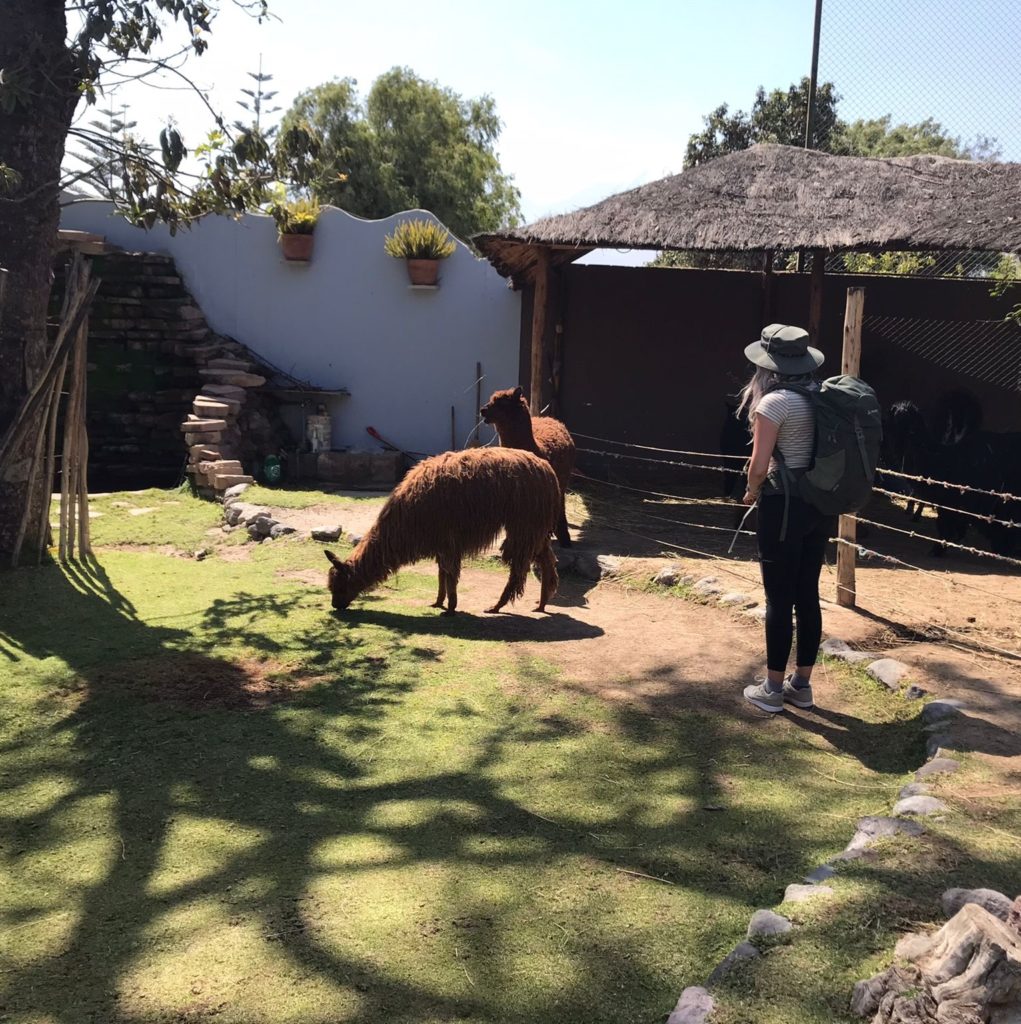
Viewpoint Yanahuara
The best view point in Arequipa is at the Yanahuara plaza. It’s easy accessible from the main square and only a short ride away with the Taxi. It should cost you something between 5 and 8 Soles, one way. Here you have a little square with a beautiful church. At the viewpoint you see 5 arches with an amazing view over the city towards the illuminated volcano El Misti. You have a little market up there too. We enjoyed staying here for a couple of hours.
The best moment to see this viewpoint is during sunset. The volcano definitely looks the best in the golden light, before the sun sets on the opposite side. Don’t miss this spot when visiting Arequipa!
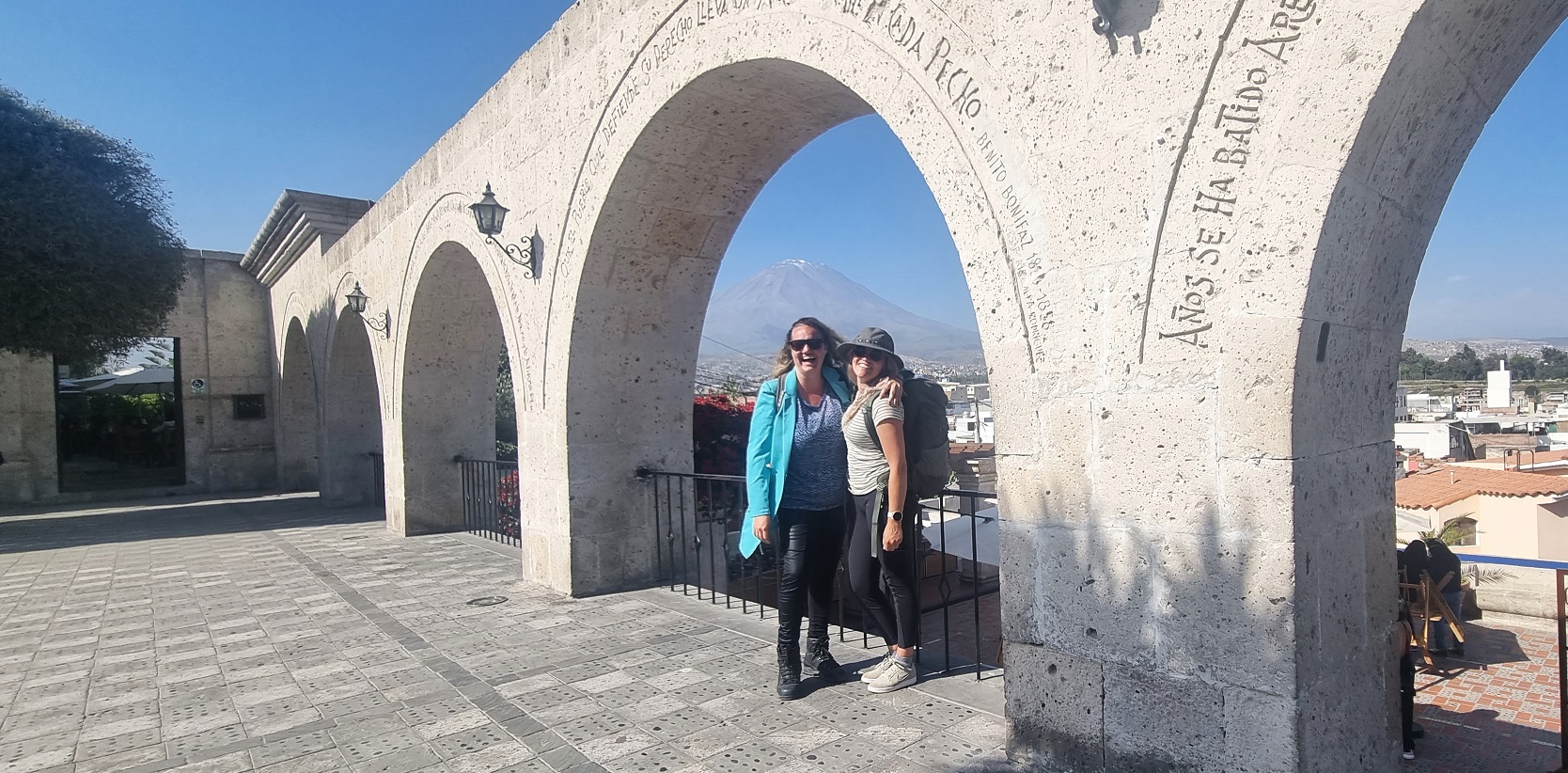
Rafting
We went on a rafting trip on the chili river. The river is just as spicy as it name says. This is a sturdy river that crosses the country to the pacific ocean. The Chili River offers the best rapids of the Arequipa area with routes of II, III and IV class, making it ideal for beginners and experienced rafters. This was our first time, so a perfect first experience for us rookies. We only went on the II and III class, because the IV class is too dangerous for beginners. When we were close to the IV class we needed to get out of the boat and walk to a more quiet spot at the river. Our guide continued rafting and I got to see why it has a higher class, there were rocks everywhere and steeper descents…making it easier that the boat will flip over. It was an amazing experience and so much fun! I felt so in my element on the water and being active. I was thinking that I could to do this the whole day! We were with 6 people on the boat and were a good team. We did a cheer to end this wonderful day. We hold up our peddles together. The guide said: “ PISCO” and we said “ SOUR”. The only thing that was missing was the actually pisco sour.
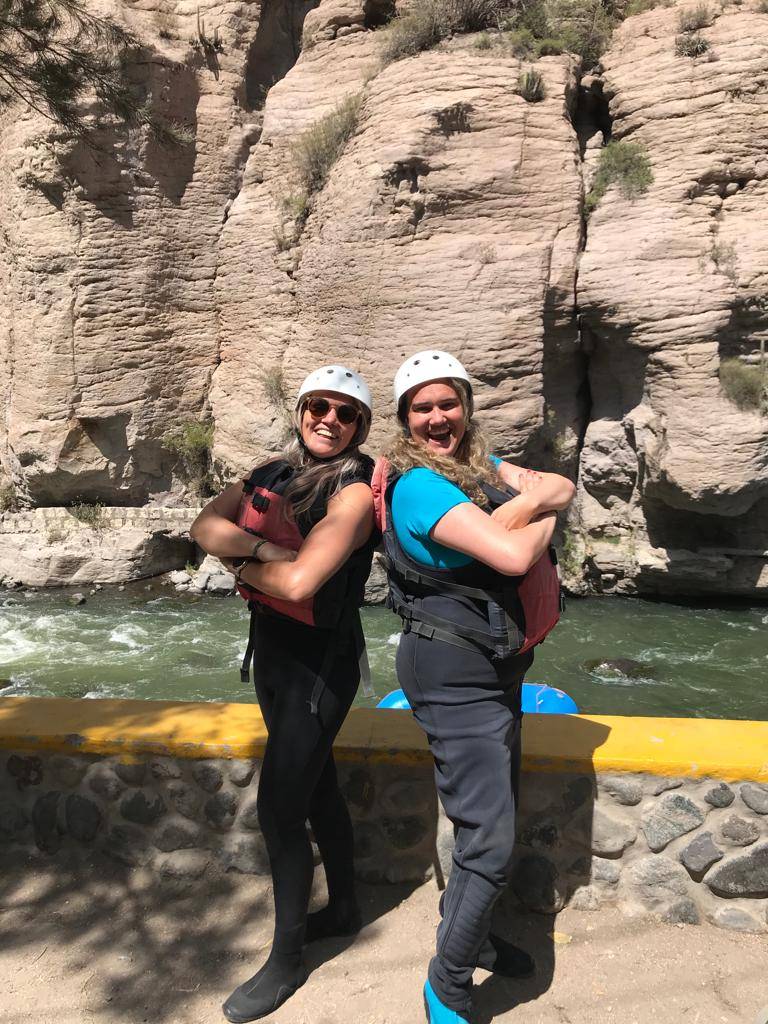
Dream team!
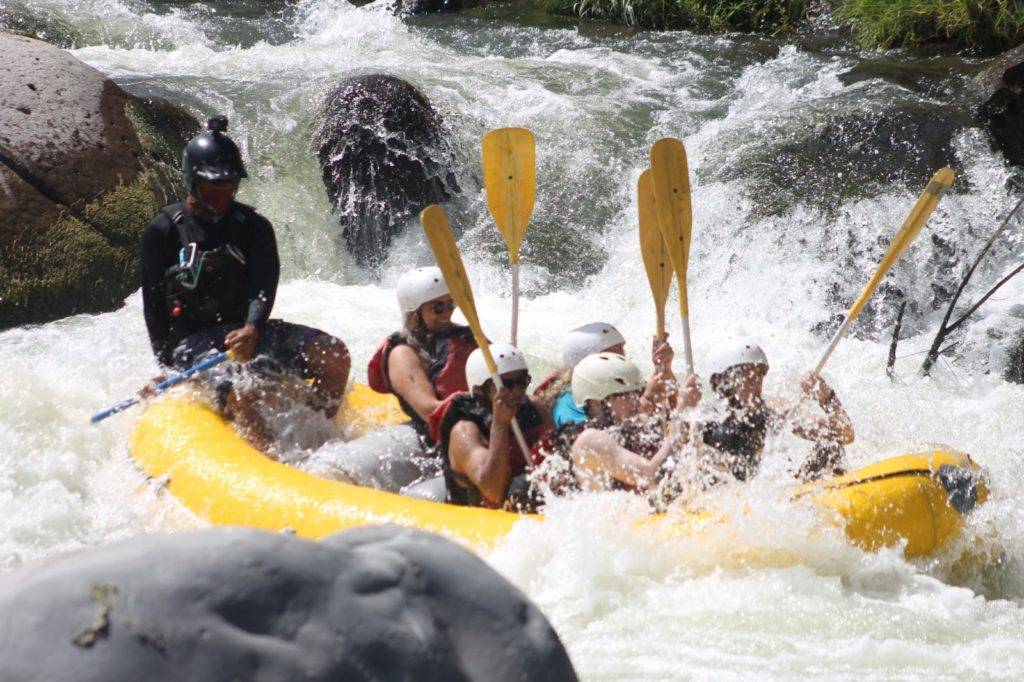
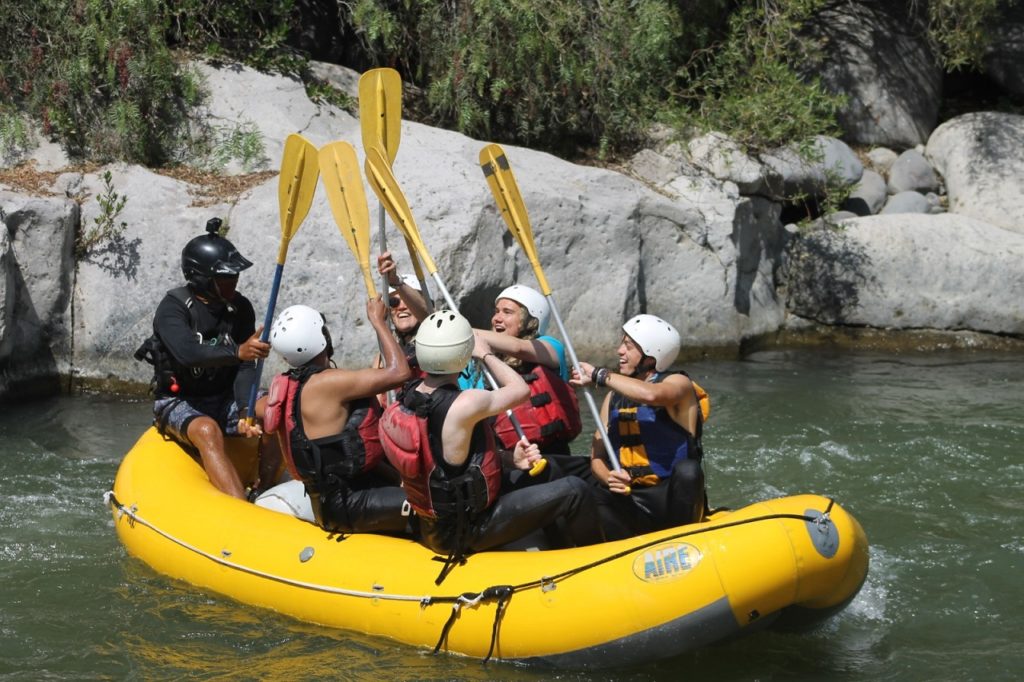
Day trip to Colca Canyon
The Colca Canyon is the world’s second deepest canyon, approximately 3,400m at its deepest point – nearly twice as deep as the US’ Grand Canyon. Sounds quite spectacular right?
We went on a full day trip to the Colca Canyon. It was a long way, approximately a 5 hour drive. So we got picked up at 3 in the morning. We slept in the bus till 7 am. Then we made a stop at the highest point of our bus ride at the mirador los Andes on 4,900 meters high. From here it’s possible to see the Misti, Chachani, Sabancaya and Ampato volcano. It was freezing cold when we stepped outside and we were only wearing a sweater. Others were wearing layers of sweaters, a jacket and a hat. There were people selling hats and gloves – of course they asked us many times if we wanted to buy something – very smart move… But we knew it was going to get warmer soon. So we didn’t want to buy anything. At this viewpoint we saw many apachetas, piles of small stones made by superstitious travelers hoping for blessings from God.
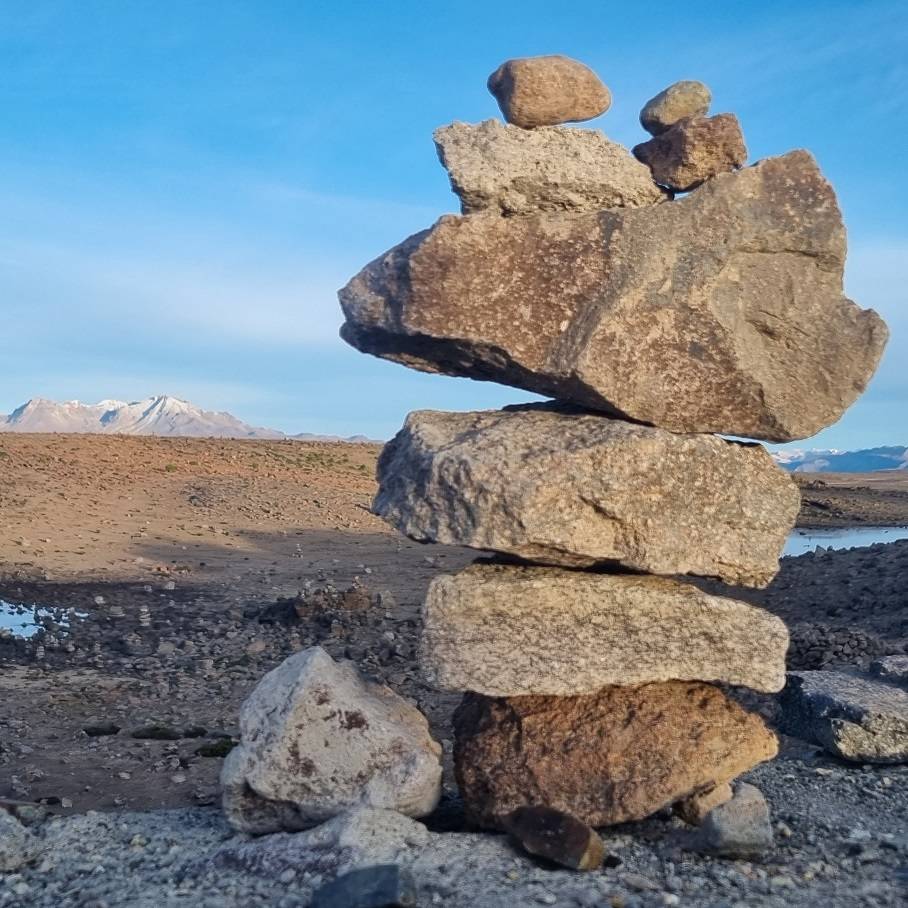
Apachetas
After that we drove to the town Chivay on 3,600 meters high. We had breakfast there. Lot of people gather here for breakfast, also locals. Amy had her laugh with an old local guy. We had 2 pieces of bread, marmalade, egg and a very nice oatmeal shake with chocolate. During our walk in the town and drive up to the Colca Canyon we saw many Peruvians dressed in traditional clothing. The people here look different than from the city. They’re smaller and firmer, have a rounder shape of face, have smaller eyes and a darker skin. You can see, right away, that they’re descendants from the Incas.
Our first stop of the tour was Molino viewpoint. Here we visited a little community where we could see and practice a typical Peruvian dance. We got dressed in traditional clothing too. The music has quite a quick rhythm, so it was a bit difficult to keep up than what I’m used to. We needed to make an 8 shape and a twirl. It was so much fun to do! The outfit was really comfortable, I could’ve walked in this outfit the whole day. At the end we took some amazing pictures with our outfit.
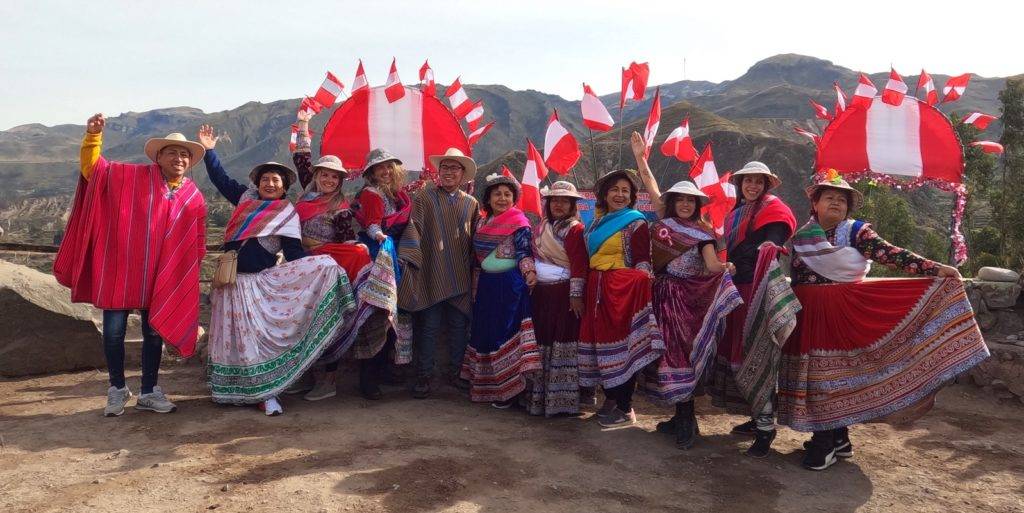
In traditional clothing we learned the Peruvian dance
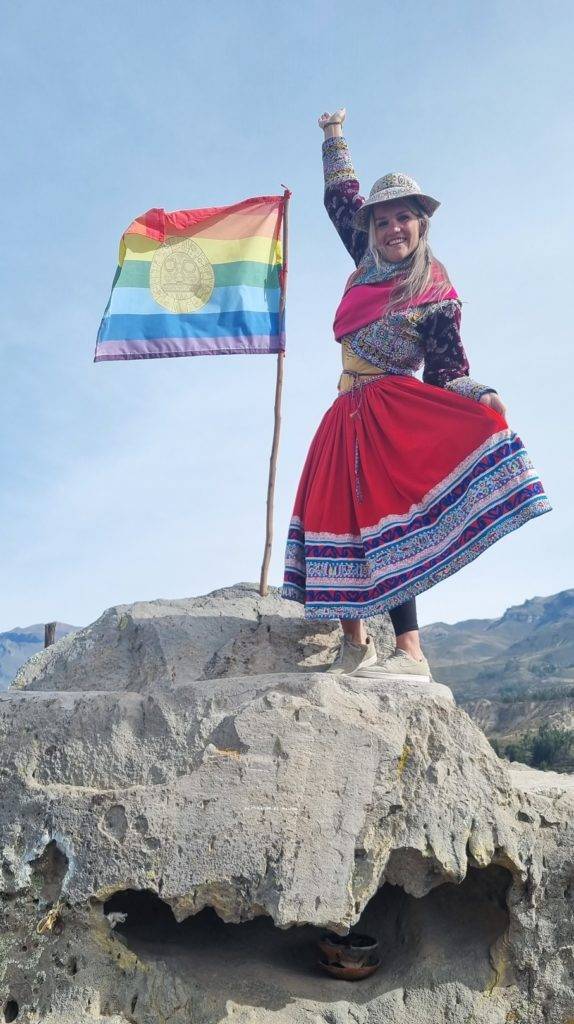
Woehoe!
On our bus ride the guide told us more about the history of this valley. This begins more than 1000 years ago. This place was first a big lake, but due to climate changes it became a beautiful valley. We drove along side the Colca River, a river that ends in the Pacific ocean. In the pre-inca and Inca time the economy was all about agriculture. They were specialized is raising Alpaca’s and cultivating beans, oatmeal’s and quinoa. They harvest these product on the many terraces you can see. In Cuzco they cultivate potatoes and that’s why the shape of the terraces are a bit different. These terraces are more oval of shape. We tried on of the locals fruits called Sanky. It looks like a kiwi, but tastes like lemon. It is “the forgotten fruit of the Incas.” It is an incredibly sour local cactus fruit that was used by the Incas as a hunger suppressant, replenisher, and medicinal aid to reduce problems associated with the gastrointestinal tract.
While we were heading to the Conder viewpoint, we drove to the tunnel of wishes. If you hold your breath till you’re out of the tunnel you can do a wish. But the drive in the tunnel takes approximately 1-1,5 minutes. So it is not an easy task.
We made an extra stop at Huara viewpoint. We saw an amazing view over the many terraces. But we actually just made it. The engine of the bus was overheated, it was losing his power and we heard so many alarms going off. We waited there for around an hour till another bus picked us up.
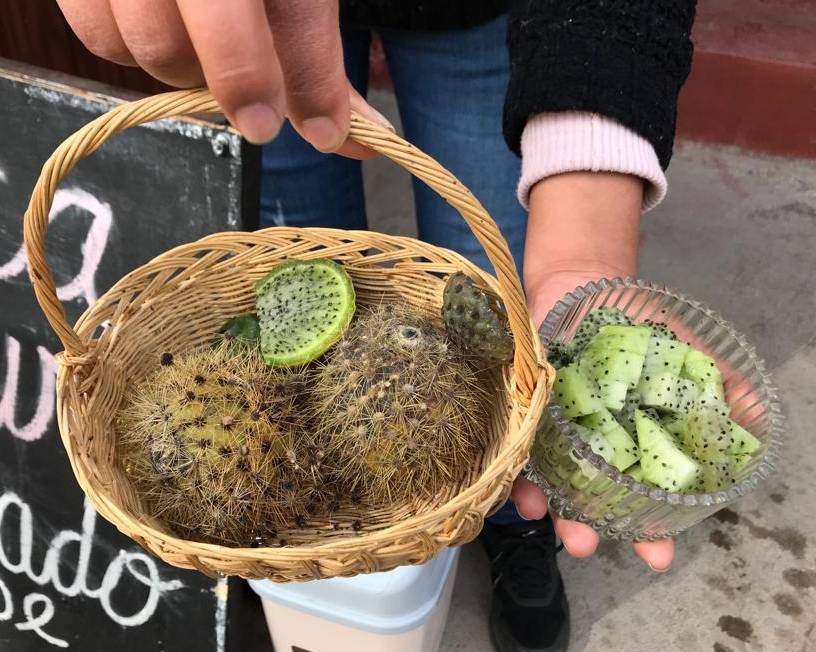
Local fruit: Sanky
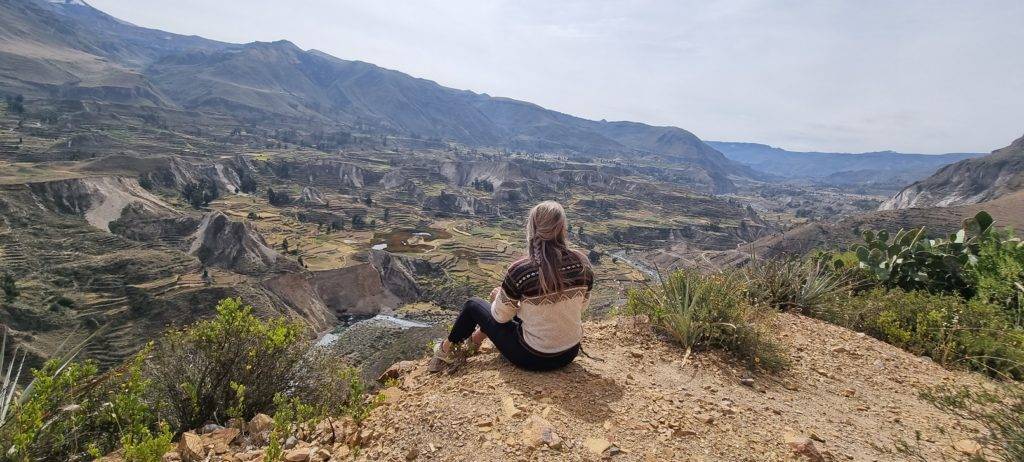
View over the Colca Canyon
Then we finally went to the condor viewpoint. The Andean condor is the largest and heaviest flying bird in the world. They have a wingspread of 3 meters and they weight around 15 kilo. They’re a scavenger animal, they only eat dead animals. The condors are at the viewpoint around 10 am. “Why 10 ‘O clock you might be thinking, that’s so oddly specific?” Yes I was wondering about that too. It turned out they put food there at 10 am. Nowadays the condors are trained to come at 10 am for a nice meal. We arrived an hour later because of the problem with our bus, when we arrived there were no condors. They’ve already eaten their meal on 10 am. Probably after that they were celebrating their siesta on a full stomach. That was a bit sad, because it would’ve been really cool to see one up close. But we enjoyed the amazing view. At the end there was a guide telling he saw a condor. I stood next to him and he was pointing where the condor was…I I couldn’t see it. It felt, like the Dutch saying, “zoeken naar een speld in een hooiberg”, translated as “looking for needle in the haystack” what means it’s almost impossible to find. I was telling him in Spanish I couldn’t see it, but after 5 minutes I saw him, a little black dot far into the deep canyon. Amy made a picture of this moment, it looks quite funny actually.
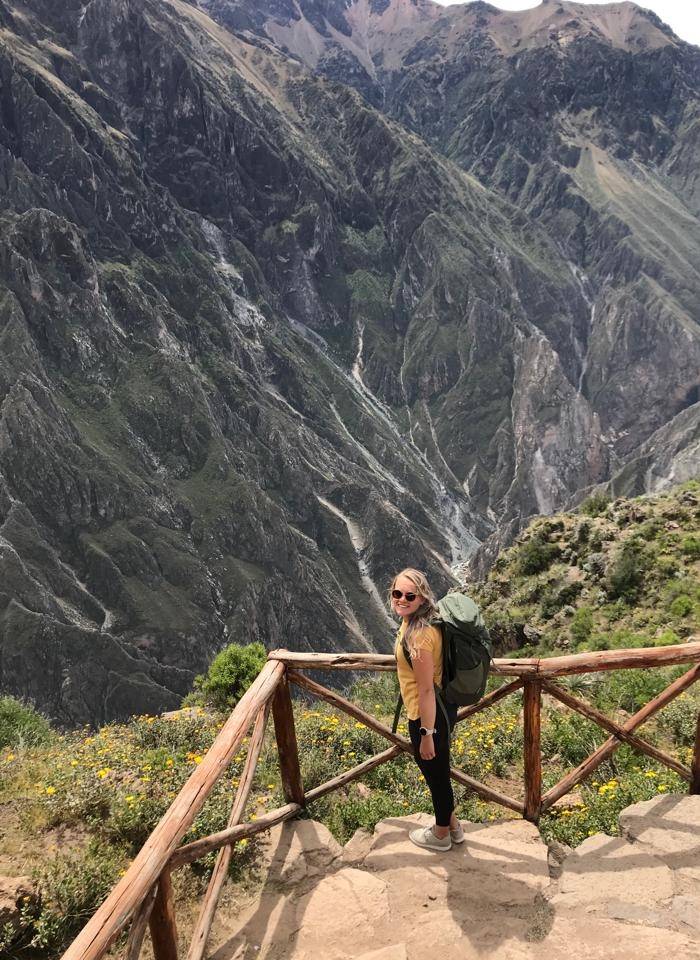
At the condor viewpoint (highlight)
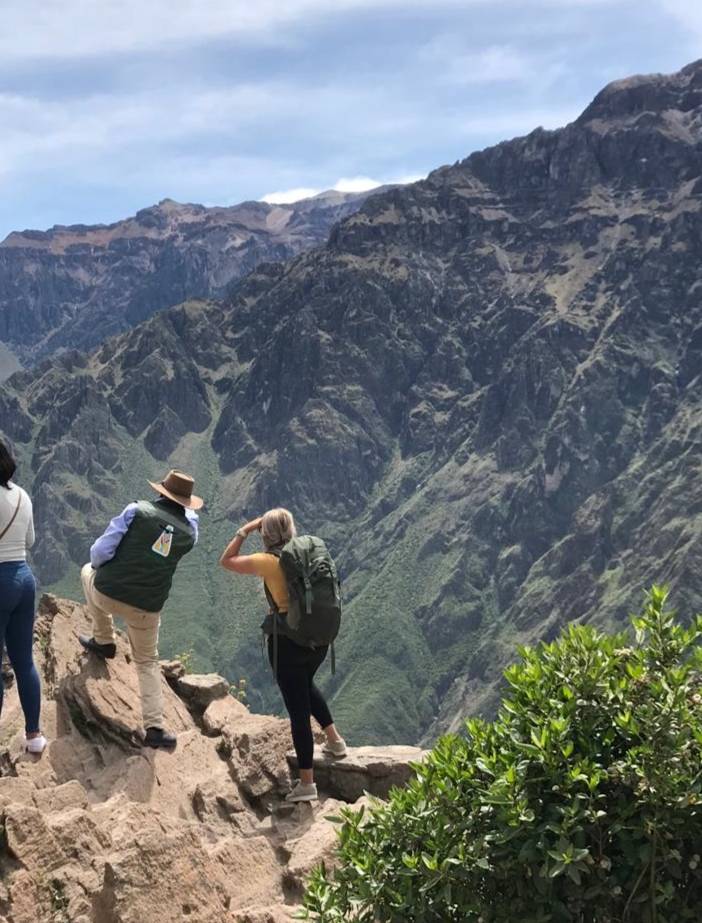
There is one! Said the guide
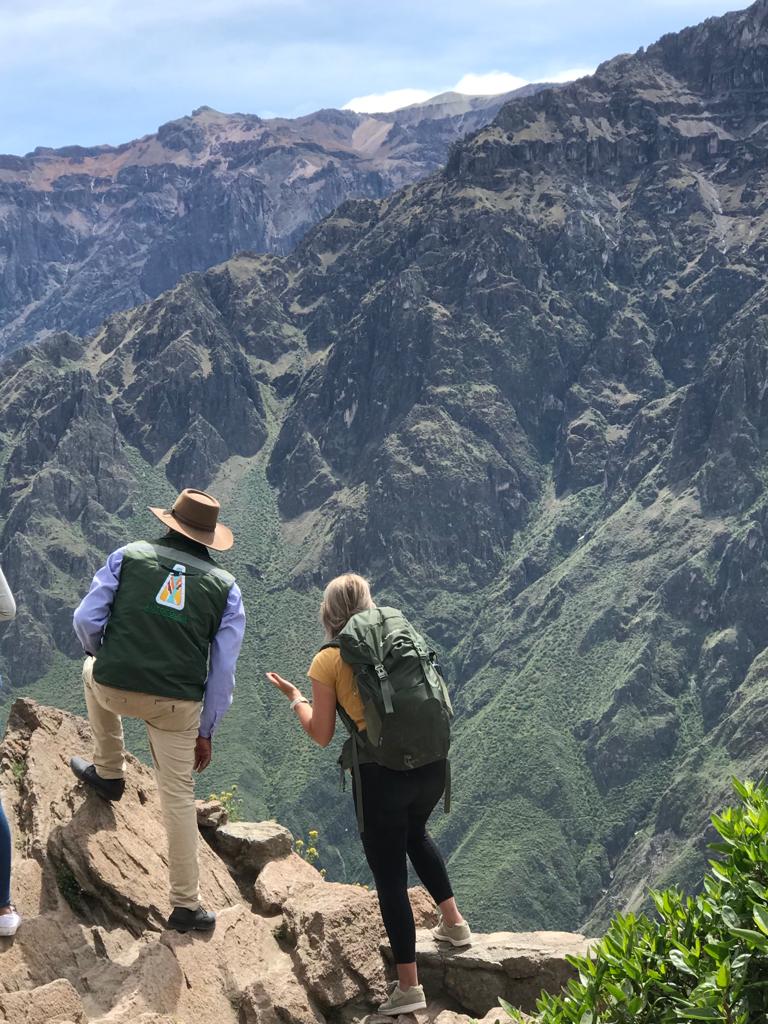
Where!? I can’t see it
The Colca Canyon is a beautiful big valley in the middle of the Andes with the second biggest canyon in the world. Even bigger than the US’ Grand Canyon. But don’t make the mistake to compare it with the Grand Canyon like I did, otherwise you’ll get disappointed. Its amazing and beautiful, but totally different than the Grand Canyon. It actually looks more like Asia with all the terraces. After the trip I tried to find why they compare it to the grand canyon. And that’s because it is a big canyon, like the one in the US and it fits the meaning of a canyon. It’s just confusing because canyons can look so different. The definition of a canyon is: “A canyon is a deep, narrow valley with steep sides. “Canyon” comes from the Spanish word cañon, which means “tube” or “pipe. The movement of rivers, the processes of weathering and erosion, and tectonic activity create canyons” – this fits the Colca Canyon and the Grand Canyon perfectly.
We ended our day relaxed with a plunge in the Jangatau hotsprings to chill and enjoy the view. The hotsprings were perfectly warm. After sopping in the hotsprings we had a nice lunch buffet. We drove back home tired and with a full stomach. Time for a siesta !
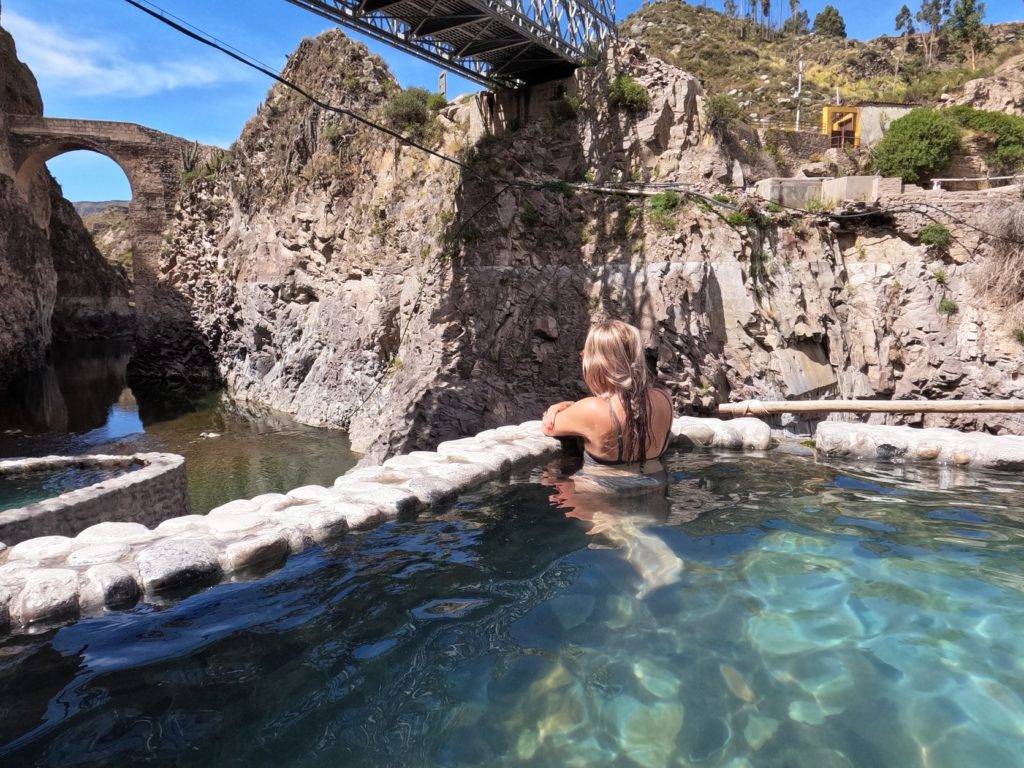
At the Jangatau hotsprings
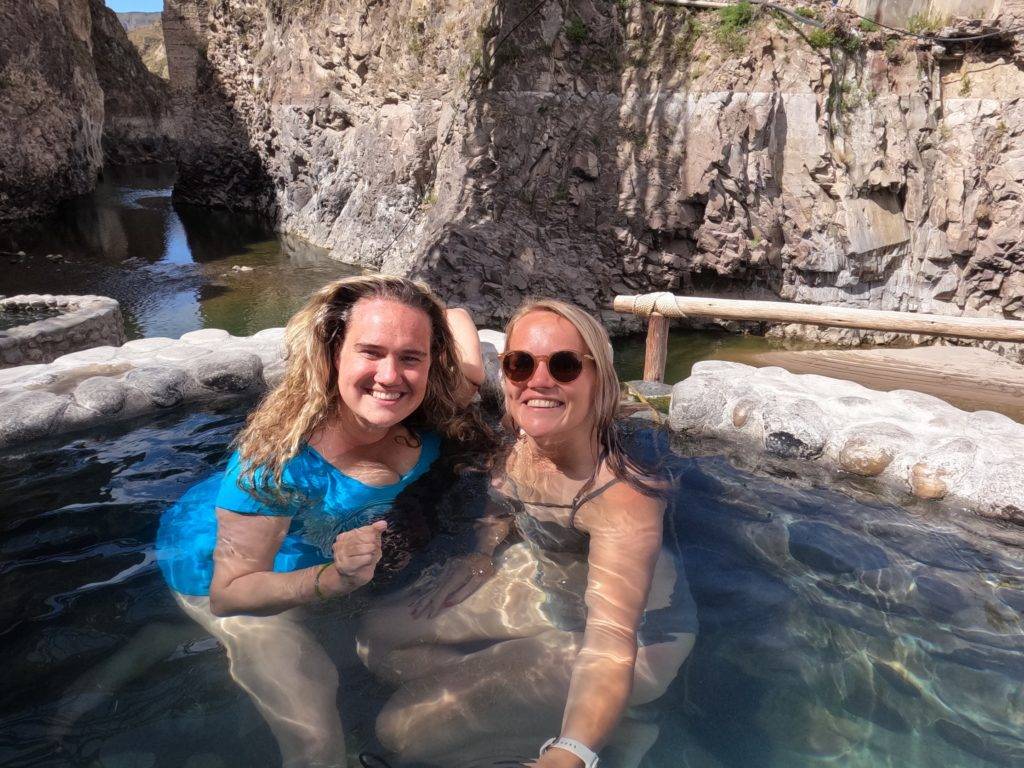
having a good time
Sunset drink/dinner
We ended our stay in Arequipa with a drink at sunset on a rooftop bar at the rooftop bar Takari. By late afternoon, the lighting in the old city is perfect for a stroll with a camera. The Plaza de Armas and Yanahuara are great spots. We only had a drink at the bar, the food was quite expensive. We met a girl from the U.S. and invited her to sit with us. She told us she is a flying doctor, an ophthalmologist, doing voluntary work all over the world. She loved her job because she could help people to see again. That’s so special and inspiring! I found out during my travels for 4 months now, that you meet so many interesting people who want to make this world a better place. We loved talking and went to a restaurant on her recommendation. The restaurant is called ” las Gringas” what means White chicks. So there we were sitting: three white chicks in a white chicks restaurant in the white city. There was no funnier way to end our stay in Arequipa. Salud!
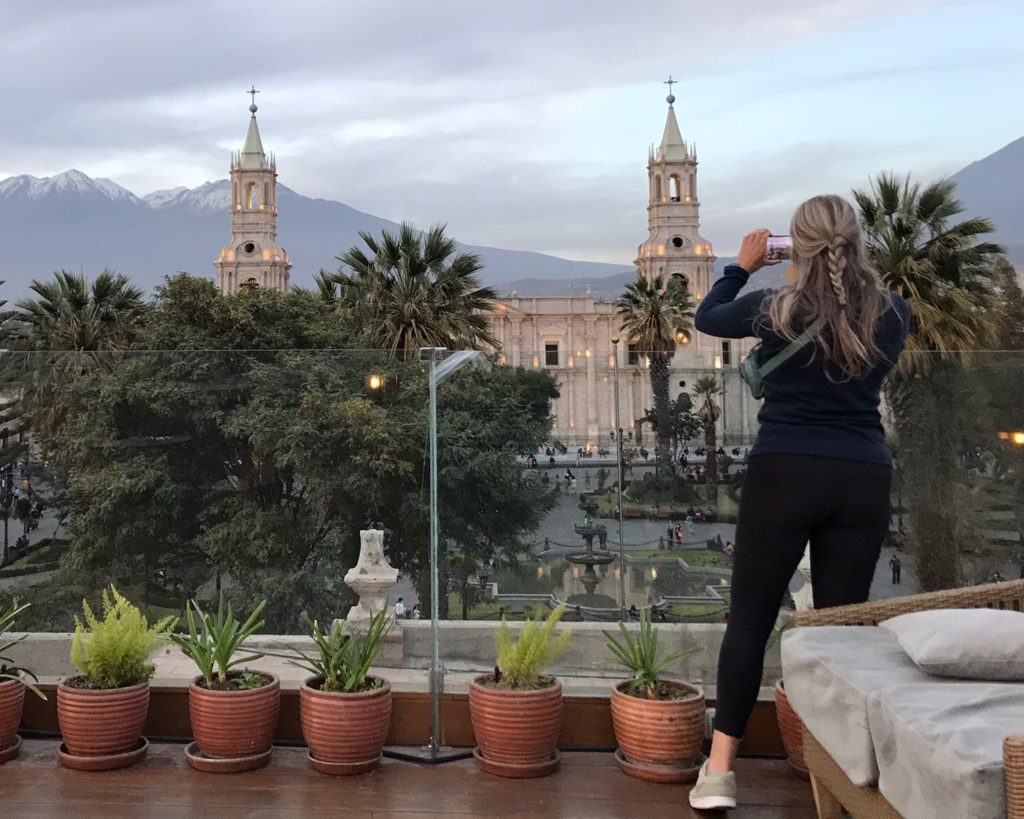
Amazing view
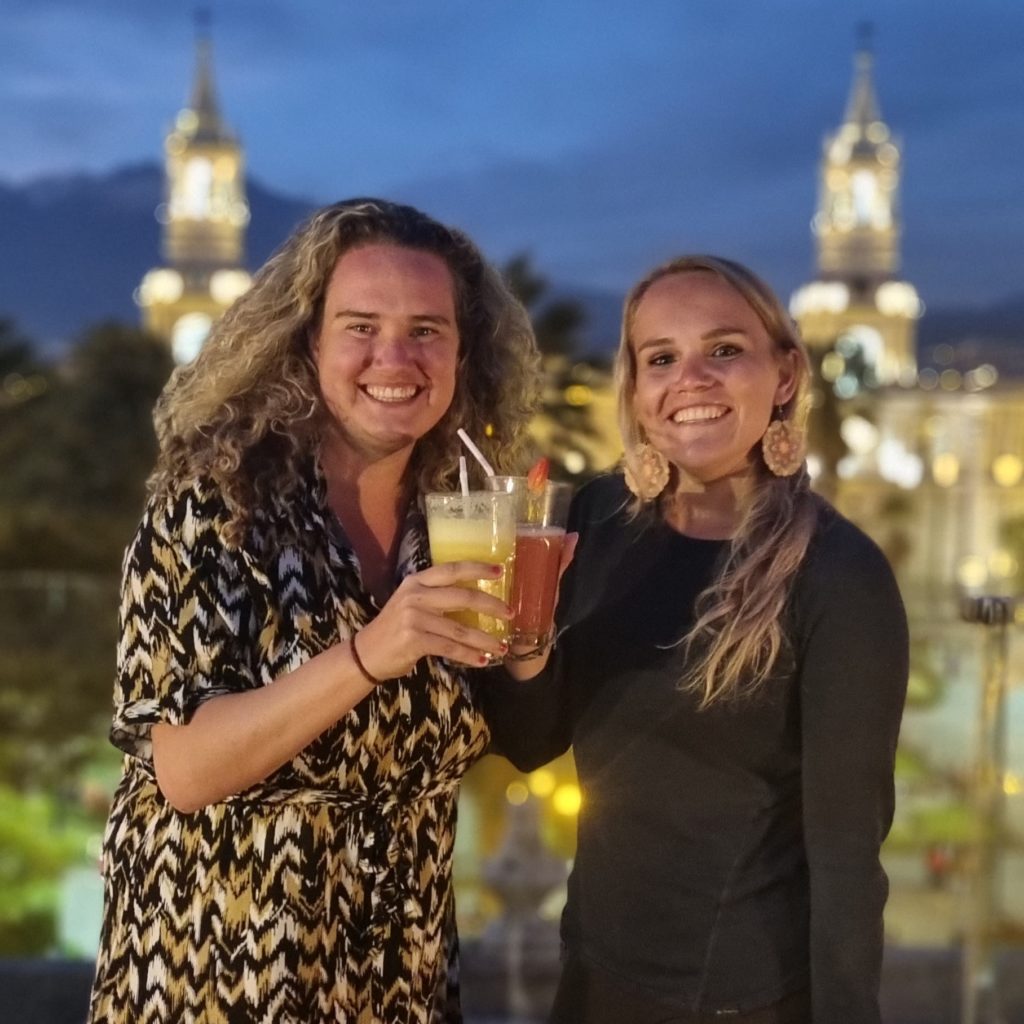
Cheers to that
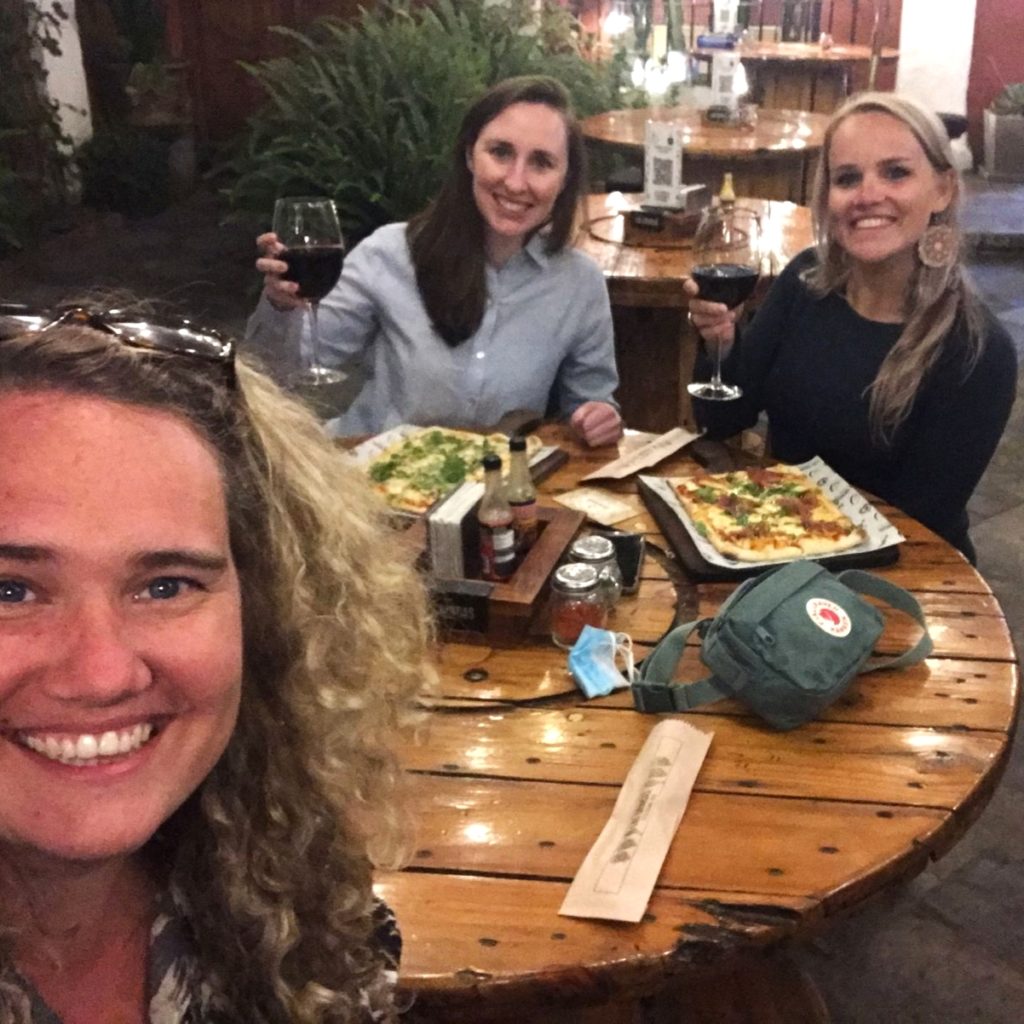
Together with a nice pizza and good company!
My guide for your Arequipa trip
I liked Arequipa because it offers so much diversity and you can take lots of trips outside the city.
- Walk tour: the city center is not really big and it's easy to just walk. There are lots of free tours that takes you to the best places & you learn more about the city.
- Top places downtown: the best places to visit in the city center are the San Camilo Mercado, Plaza de Armas, Yanahuara plaza, Museo Santuarios Andinos, Monasterio de Santa Catalina, Mundo llama and the free arts galleries.
- Sunset view: one must thing to do is watch the sunset from a rooftop bar in Plaza the Armas or at the Yanahuara viewpoint.
- Colca Canyon: We went on a full day trip to the Colca Canyon. If you like nature and hiking the 2 or 3 day trek is much more fun and you have more time to enjoy this beautiful valley. But together with Amy we couldn’t go for a trek because of Amy her accident, so we took the full day trip.
- Rafting: the city is bisected by the Rio Chili. This river offers great rapids for a rafting tour. It was a surprisingly cheap and fun tour to do. So if you visited Arequipa plan a half day extra to do some rafting.